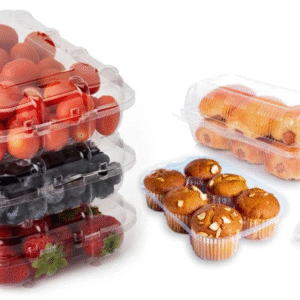Market Overview 2025-2033
Saudi Arabia chocolate market size reached USD 1,092.0 Million in 2024. Looking forward, IMARC Group expects the market to reach USD 1,609.0 Million by 2033, exhibiting a growth rate (CAGR) of 4.4% during 2025-2033. The market is expanding due to increasing consumer demand, rising disposable incomes, and a growing preference for premium and imported products. Innovation in flavors, packaging, and health-conscious options is driving growth. Seasonal demand, gifting trends, and retail expansion contribute to a vibrant and competitive industry.
Key Market Highlights:
✔️ Strong market growth driven by rising disposable income and gifting culture
✔️ Increasing demand for premium, sugar-free, and dark chocolate variants
✔️ Expanding availability through supermarkets, specialty stores, and e-commerce platforms
Request for a sample copy of the report: https://www.imarcgroup.com/saudi-arabia-chocolate-market/requestsample
Saudi Arabia Chocolate Market Trends and Drivers:
The Saudi Arabia chocolate industry is evolving rapidly, shaped by health-conscious consumers and a surge in functional, low-sugar product innovations. By mid-2024, 52% of consumers under 35 preferred low-glycemic-index chocolates—an indicator of shifting preferences driven by rising diabetes rates, which now affect 18% of the adult population. Government-backed programs like Quality of Life 2030 are reinforcing this health-first mindset. As a result, global and local brands are adapting. Mondelez launched its sugar-free Cadbury line specifically for the GCC in 2024, seeing a 120% surge in regional sales.
Meanwhile, local brands like Bateel are blending innovation with tradition—creating dark chocolates infused with dates, camel milk, and enriched nutrients like vitamin D and magnesium, priced at a 28% premium. Regulatory reforms are fueling Saudi Arabia chocolate market growth. The Saudi Food and Drug Authority (SFDA) introduced front-of-pack nutrient labeling in 2024, prompting faster reformulations across product lines. Still, perceptions around “healthy chocolate” remain a hurdle—63% of consumers equate health with compromised flavor. Price sensitivity among lower-income groups also limits broad adoption. In response, companies are testing hybrid strategies.
For instance, Almarai’s pilot program offered dietitian-endorsed chocolate samples at Riyadh gyms, converting 41% of first-time tasters into repeat buyers. Digital transformation is a defining force among Saudi Arabia chocolate market trends. In 2024, 58% of premium chocolate sales took place online. E-commerce platforms like Nana Direct and HungerStation now use AI to curate personalized assortments based on purchase history, social media behavior, and seasonal patterns such as Ramadan gifting. Mars KSA’s influencer campaign featuring limited-edition Snickers Hijab boxes designed by local artists sold 15,000 units in just 72 hours via shoppable livestreams on TikTok.
Trust and transparency are becoming essential in the premium segment. Brands like Patchi are leveraging blockchain to trace cocoa bean origins and carbon footprints, offering consumers greater visibility. Meanwhile, dark social commerce is flourishing on private channels like WhatsApp and Telegram, where “chocolate subscription clubs” give early access to high-demand imports like Japan’s Royce’ Nama Chocolate. At the same time, omnichannel integration remains crucial. Hershey’s Click-and-Mortar concept in Jeddah lets customers 3D-print custom chocolate orders that they’ve placed online, blending digital ease with immersive experiences.
Chocolate is deeply woven into Saudi Arabia’s SAR 30 billion gifting culture, making it a cornerstone of celebrations like weddings, corporate events, and religious holidays. Luxury blends with heritage in collections like Godiva AlUla, which features date and rose-infused chocolates that achieved a 93% sell-through rate during Eid al-Fitr. Artisan brands like Chocoline are redefining luxury with creations like 24K gold-leaf Saffron Gold bars, priced at SAR 950 ($253) and marketed as edible collectibles.
The Saudi Arabia chocolate industry is also tapping into B2B innovation. Nestlé KSA’s new portal enables co-branded KitKat bars with laser-engraved logos, capturing 17% of the B2B gifting market within months. But rising cocoa costs—up 62% year-over-year in 2024—are challenging mid-tier brands like Dairy Milk. In response, smart premiumization tactics are gaining momentum. Ferrero’s Rocher Date edition uses locally sourced ingredients to reduce import costs while preserving a 22% premium positioning.
Projections for the Saudi Arabia chocolate market growth are strong, with the market expected to reach $2.1 billion by 2027. This momentum is fueled by three forces: health-driven innovation, digital ecosystem maturity, and cultural premiumization. With 70% of the population under 35, there’s rising demand for cutting-edge formats like chocolate-covered protein bites and CBD-infused truffles—approved for sale in 2024 under new medical guidelines.
Premium demand continues to be concentrated in Riyadh and Jeddah, but emerging cities like Dammam are showing growth. Lindt’s launch of three Chocolate Lounges in the Eastern Province in 2024 is one example. Meanwhile, national efforts to establish Saudi Arabia as a cocoa-processing hub are underway, with solar-powered factories in Neom positioned to produce climate-neutral chocolate. However, challenges remain, from supply chain disruptions—such as the 19% increase in Belgian import costs due to Red Sea shipping delays—to generational shifts. A striking 68% of Gen Z consumers now prefer indie brands over legacy names.
Looking ahead, cross-industry experimentation will intensify. Albaik’s 2024 launch of a fried chicken-flavored chocolate gained viral attention, while Mars will test AI-driven pricing models during the Hajj season to optimize dynamic demand. Saudization policies requiring 30% local workforce in food manufacturing are pushing new R&D efforts. Together, these innovations ensure that the Saudi Arabia chocolate market trends remain globally relevant, making the Kingdom a rising force in the international chocolate landscape.
Saudi Arabia Chocolate Market Segmentation:
The report segments the market based on product type, distribution channel, and region:
Study Period:
Base Year: 2024
Historical Year: 2019-2024
Forecast Year: 2025-2033
Breakup by Product Type:
- White Chocolate
- Milk Chocolate
- Dark Chocolate
- Others
Breakup by Product Form:
- Molded
- Countlines
- Others
Breakup by Application:
- Food products
- Bakery Products
- Sugar Confectionary
- Desserts
- Others
- Beverages
- Others
Breakup by Pricing:
- Everyday Chocolate
- Premium Chocolate
- Seasonal Chocolate
Breakup by Distribution:
- Direct Sales (B2B)
- Supermarkets and Hypermarkets
- Convenience Stores
- Online Stores
- Others
Breakup by Region:
- Northern and Central Region
- Western Region
- Eastern Region
- Southern Region
Competitive Landscape:
The market research report offers an in-depth analysis of the competitive landscape, covering market structure, key player positioning, top winning strategies, a competitive dashboard, and a company evaluation quadrant. Additionally, detailed profiles of all major companies are included.
Contact Us:
IMARC Group
134 N 4th St. Brooklyn, NY 11249, USA
Email: sales@imarcgroup.com
Tel No:(D) +91 120 433 0800
United States: +1-631-791-1145





